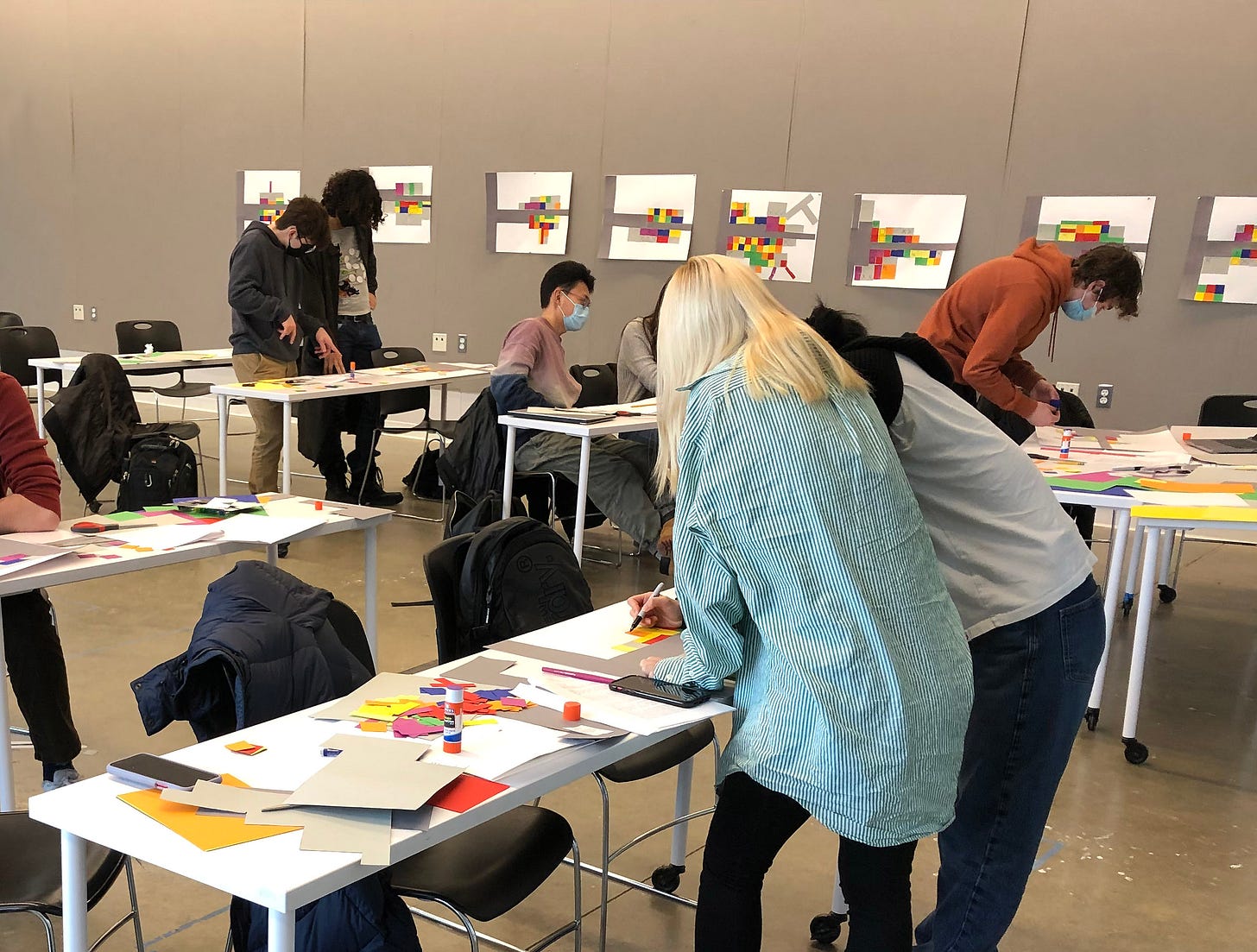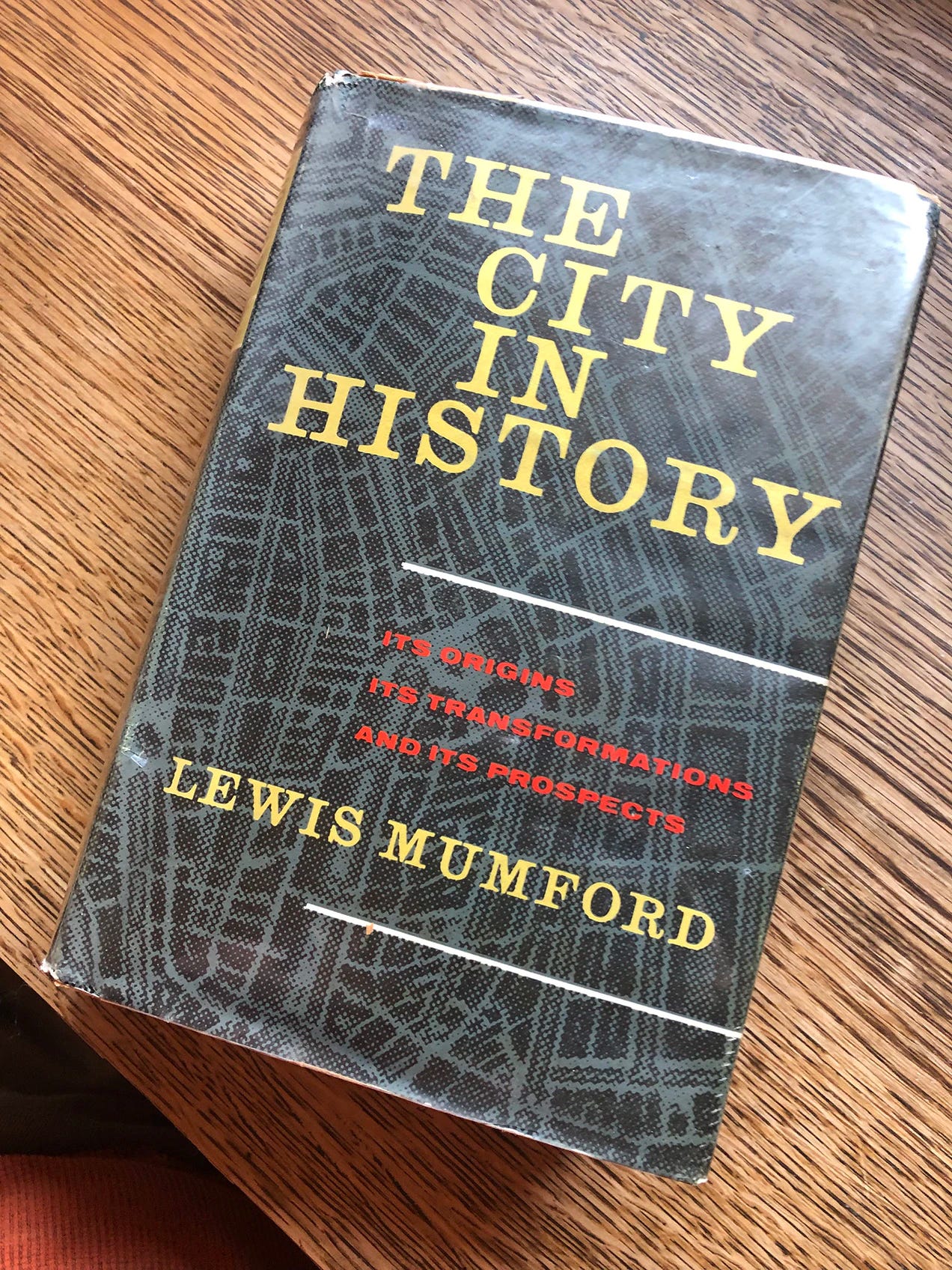Back in January, we marked the launch of our new bachelor of science program in Urban Technology. Whereas many college experiences start with a couple years of general education and then move into a specialized major, our students are taking “UT” courses from the first semester, beginning with UT 101: “Why Cities?”
The first of four required courses on urbanism, “Why Cities” offers students a sampling of case studies, ranging from Alexandria in the third century BCE to present-day Singapore, and everywhere in between. We caught up with the professor (and previous newsletter interviewee), Malcolm McCullough, to see how the class is going, and we even ended with a little poetry.
💬 Hello! This is the newsletter of the Urban Technology program at University of Michigan, in which we explore the ways that technology can be harnessed to nurture and improve urban life. If you’re new here, try this 90 second video introduction to our degree program.
🏙️ Why Cities? with Malcolm McCullough
Editor’s note: One of the earliest discussions in creating the urban technology degree was about to help students wade into the deep pool that is understanding cities. After filling the whiteboard with diagrams and talking through many options, our conference room of five people came to a realization that felt like it had been there all along. Erase the multi-hyphenate titles. Drop the subtitles. Simplify. The place to start as a student of cities is the most important question: Why?
BRYAN BOYER: Why cities?
MALCOLM McCULLOUGH: You mean, why “Why Cities”? In foresight, there was a wish to create a sense of wonder and of witnessing complexity. In hindsight, it is a way to take a horizon scan of the 3,000 other ways cities could be besides the way they have been in North America in our lifetime. So much of education is about finding compassion for views other than one’s own. That's the short answer.
There are so many different reasons for why cities. It’s not all economic. Some people are there for personal expression. Some people are there because of family and tradition. Some people are there just to exercise. Some people are there to hide—there's anonymity in the city.
Some of the case studies we’re doing have focused on “why cities” for particular reasons. For example, to be in the know: Londoners with their gazettes, newspapers, and printed matter that others did not have. Why cities? For the theater of it. The most common kind of urban theater down the ages has been the display of power.
It’s like a splash screen course. If you sample it at any given moment, in any given week, some of what we do might seem kind of childish, but the whole is aiming at something longer and deeper, happier and more subtle.
BRYAN: What are you doing in the course? What’s the cadence of it?
MALCOLM: It is polyrhythmic, and therefore it’s a bit of a juggling act for the students as well as for me, which is why I’m having so much fun. There are some things happening on a weekly cycle, some things on a biweekly cycle, some things on a monthly cycle, and some things just once.
Probably the main piece from the students’ perspective are the exercises. There are six biweekly exercises, and they’re quite varied, employing a range of media.
BRYAN: Can you give us some examples?
MALCOLM: The first exercise was photo sampling, studying details of people making use of technology that’s situated somewhere at street level. The second exercise was scenography, which was sampling movies, games, and paintings for how cities have been portrayed. Third was [the game] Cities: Skylines, because that was the single thing most commonly mentioned in students’ application essays [to the program], and because so many people have first learned their urbanism from that. But it’s urbanism of a kind, right? It's very transportation-centric.
Fourth was an urban growth exercise that I recalled from my own high school experience, when a lot of educators were doing something called the urban geography project. We would have done it with Legos back then, and today you might do it with Minecraft, but our students did it with colored paper cutouts.

Then there was an exercise called “Hello GIS,” in which we overlaid network infrastructures using the Chicago Data Portal. And last is an exercise called “Why Here,” in which they’re trying to write dialogue, because our case study is LA, and what they do in LA is write dialogue. Professional interaction designers do storyboards and create personae, so students are trying that out in this class for the first time.
BRYAN: What else is happening in the course?
The keel of the course are the case studies. It’s not a history course, and there’s no exam. Students are explicitly instructed not to internalize all of this or try to remember it, but just let it wash over them and shape them. The case studies are meant to convey enthusiasm for how else cities happen, and that’s the key. This isn’t so much about architecture and city form. It’s about “Cities: Wow!” — which was another name for the course in its initial conception.
The main thread turns out to be what I call “city reading,” which comes from a wonderful work by an informational historian named David Henkin. City reading is situated reading, something other than the device that is always in your hand everywhere. Since city reading has been a thread, there has been a tilt toward cities that were great epicenters in the history of information: Alexandria, Córdoba, London, San Francisco.
The goal of the course is to acquire vocabulary to talk more subtly about cities. The conversations about cities could be something other than “Let’s smash the system,” or “Cool, how did they do that?” Subtle conversations about cities are important. So students have a discussion group for the last half hour each Wednesday, for which they read a manageable selection from Lewis Mumford’s classic book, The City in History.

BRYAN: What has been the biggest surprise so far?
MALCOLM: It’s been surprising how each of the participants has found their own voice by which to engage this. I certainly told them that they are blazing a trail in this new program, and that there are no preconceived notions of success, so: go for it! And they all have. That has been the most pleasant surprise.
I think the surprises lie ahead. It will be interesting how the experience of this course resurfaces in later work by these individuals. For them to have had something that’s mainly founded in wonder and indirect associations, without trying to solve anything yet—I think that’s going to be some nice ballast to have.
CHARLIE: If you can predict what these students will do in the future, do you find them more technically-inclined? More creative? Politically-focused?
MALCOLM: I think they’re focused on pathbreaking. I think they like the fact there are no well-worn paths. These are my words, not theirs, but I think they understand that neither the market nor the state is going to solve all this all by itself. They are politically alert, socially alert. They are not quick to dismiss.
BRYAN: Speaking of knowing what to do, can you give some advice for whatever the students do next—in the form of a haiku or any other structured poem that you prefer?
MALCOLM: Be careful what you wish for:
To keep it human When Google owns all answers Ask harder questions.
Or try this heroic couplet:
Deep are the data now flooding our age Drowning alike both the fool and the sage
Malcolm’s students Urja Kaushik and Hannah Bernstein were kind enough to share their exercise from Why Cities? Two truths, a guess, and a lie about Constantinople/ Istanbul:
Links
🌳 Here’s another important question: Who is allowed to plant a tree?
🏁 U-M opened MCity autonomous vehicle test track in 2015, but it’s actually the second time this has happened in Ann Arbor. The first was in 1971!
⚡️ Matt Jones, Principal Designer at Moixa, a smart battery company enabling decarbonisation, will give a talk open to the public on April 5.
🤝 “de_plan is a an autonomous, decentralized collective of designers, architects, planners and urbanists interested in working on the future of cities. We like to describe our work as spatial solutions.”
🖼 RIP Mr. GIF.
These weeks: Protograntees had a meetup. Cities Intensive is getting intense. Toban has joined the team to help with that one: welcome Toban! Troubleshooting a flippyflappy display. Admissions and preparing for events with prospective students and parents. Snow and sunshine on the same day. 🏃



